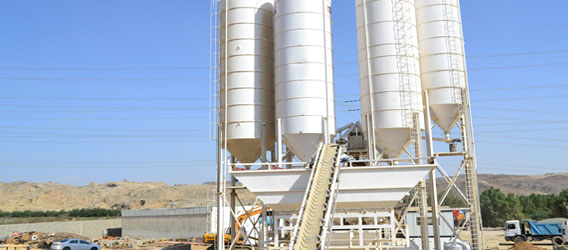 |
| Mastour ReadyMix is a high quality ready mix concrete and cement product producer, high quality concrete |
Concrete is strong in compression. So what does that really mean?
To understand compressive strength, think about several packs of crackers sitting on the floor. If you carefully stand on those packs of crackers, your weight will probably be supported, but you are putting those crackers in compression. Your weight tends towards crushing those crackers. If you jump up and land on those packs of crackers, you will increase the force applied and probably crush the crackers. You will have made the crackers fail in compression.
Now try to jump on a concrete sidewalk. You’d have to jump pretty high to make that sidewalk crush under your weight. In fact, you probably couldn’t make that sidewalk fail in compression. That’s why concrete gets used so much in construction. But the story doesn’t end with compression.
Grab a piece of string and pull in either direction. You’ve just put the string into tension. If you can pull hard enough, the string will fail in tension by snapping. Concrete, while quite strong in compression, fails quickly in tension by cracking. The resistive strength of concrete for compression is around 4,000 pounds per square inch, while the resistive strength for concrete in tension is probably less than 400 pounds per square inch. Generally, the tension strength of concrete is less than 10% of its compression strength.
Builders in the past understood these properties of concrete and stone and typically used those materials only in compression. So walls could be concrete and stone, as could foundations, since both primarily resisted downward compression loads.
Arches are an interesting structural form because arches also act totally in compression. Therefore, arches above windows in old buildings could be concrete or stone because the load transferred around the arch keeping the structure in compression, so tension cracks didn’t occur in the concrete or stone. Barrel vault ceilings are really just three dimensional arches, so they also worked as compression members only.
If an arch above a window got too flat, however, it would stop working as an arch and the bottom of the member would go into tension. So, regular concrete cracks at the bottom of the beam, near the center, in this scenario. The cracking then causes the beam to fail. This example illustrates how concrete fails in tension, which had traditionally been a major design shortcoming for concrete.























